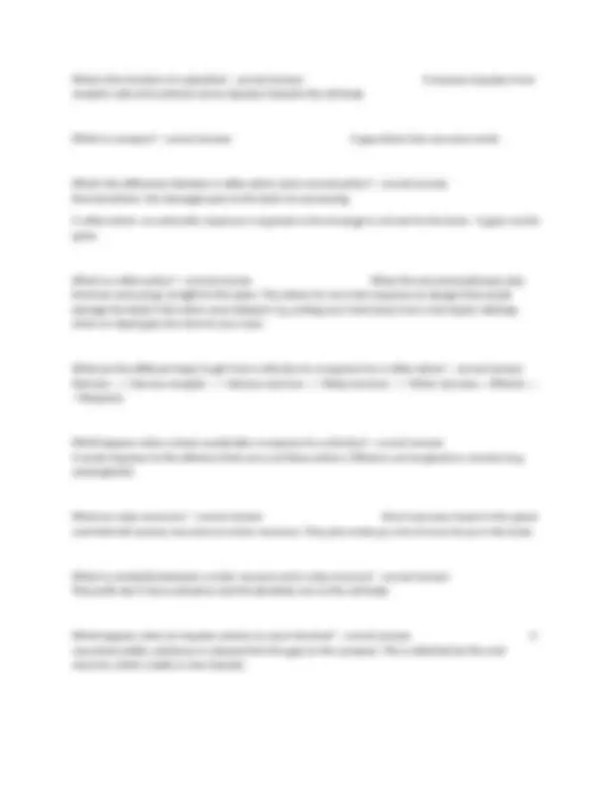




Study with the several resources on Docsity

Earn points by helping other students or get them with a premium plan


Prepare for your exams
Study with the several resources on Docsity

Earn points to download
Earn points by helping other students or get them with a premium plan
Community
Ask the community for help and clear up your study doubts
Discover the best universities in your country according to Docsity users
Free resources
Download our free guides on studying techniques, anxiety management strategies, and thesis advice from Docsity tutors
Biology GCSE Edexcel Certification Review Exam Questions & Answers
Typology: Exams
1 / 4

This page cannot be seen from the preview
Don't miss anything!



What is a stimulus? - correct answer A change in the environment to which an organism responds to. What is a response? - correct answer A change in behaviour in response to a stimulus. What is the central nervous system (CNS) made of? - correct answer The brain and the spinal cord. What makes up the nervous system? - correct answer The brain and spinal cord (for the CNS) and trillions of nerve cells called neurones. What is the nervous system for? - correct answer It is an organ system that allows allows your body to communicate, using electrical signals called impulses. What is a sense organ? Give an example. - correct answer An organ that contains receptor cells to detect stimuli. E.g. eyes, ears, skin. How does the body create a response to a stimulus? - correct answer Receptor cells in a sense organ detect a stimulus, they create impulses which usually travels to the brain. The brain then processes this information and can send impulses to other parts of the body to cause a response. What are different steps to get from a stimulus to a response for a reflex action? - correct answer Stimulus ---> Sensory receptor ---> Sensory neurone ---> Relay neurone ---> Motor neurone ---> Effector ---> Response
What is neurotransmission? - correct answer The process by which nerves communicate with each other using impulses and it happens in the neurones. How have neurones adapted to carry impulses? - correct answer They have long extensions called axons and an insulating covering called a myelin sheath. What are the different types of neurones? - correct answer Sensory neurones, relay neurones and motor neurones. What is the function of a sensory neurone? - correct answer To carry messages from the receptor cells to the CNS. What is the function of a relay neurone? - correct answer To pass an impulse from one neurone to another. What is the function of a motor neurone? - correct answer To carry messages from the CNS to a muscle or a gland (effector) What is a neurotransmitter? - correct answer Chemicals that allow a message to be passed from one neurone across the synapse, to the next neurone. What is the path of an impulse along the sensory neurone? - correct answer receptor cell - dendrite- dendron-cell body- axon- axon terminal. How have the dendrons and axons adapted to their function? - correct answer
Which neuronal pathways do reflexes use? - correct answer Reflex arcs, which bypass the parts of the brain involved in processing information and so are quicker than responses that require processing. What do axon terminals do? - correct answer Pass impulses to other neurones.